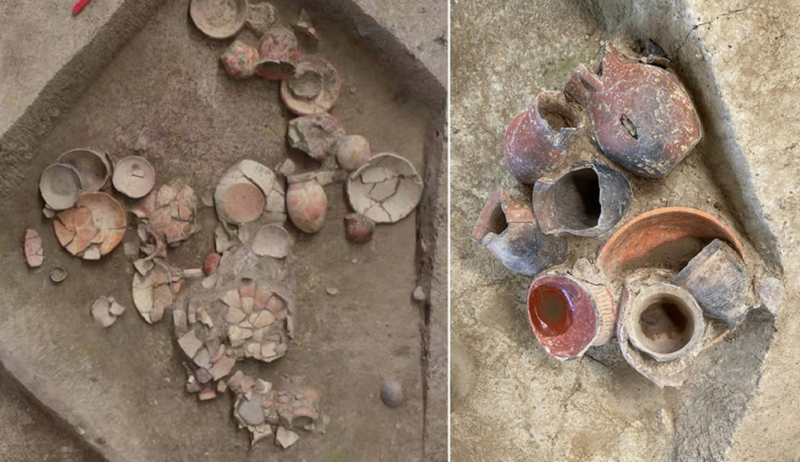
Enlarge (credit: Wang et al. 2021)
At a 9,000-year-old burial site in China called Qiaotou, archaeologists recently unearthed a number of ceramic vessels. Some of the vessels were shaped like the long-necked, round-bellied bronze pots that people used for alcoholic drinks millennia later. And that made Dartmouth College anthropologist Jiajing Wang and his colleagues wonder whether these earlier clay versions might have once held beer, too.
Bits of the residue left inside eight of the 13 pots turned out to contain phytoliths (fossilized plant remains) from rice, tubers, and a plant called Job’s tears. Starch molecules in the residue showed signs of being heated and fermented. Wang and his colleagues also found yeast and mold, key ingredients in fermentation.
“Our results revealed that the pottery vessels were used to hold beer, in the most general sense—a fermented beverage made of rice, a grain called Job’s tears, and unidentified tubers,” said Wang. “This ancient beer, though, would not have been like the IPA that we have today. Instead, it was likely a slightly fermented and sweet beverage, which was probably cloudy in color.”
No comments:
Post a Comment